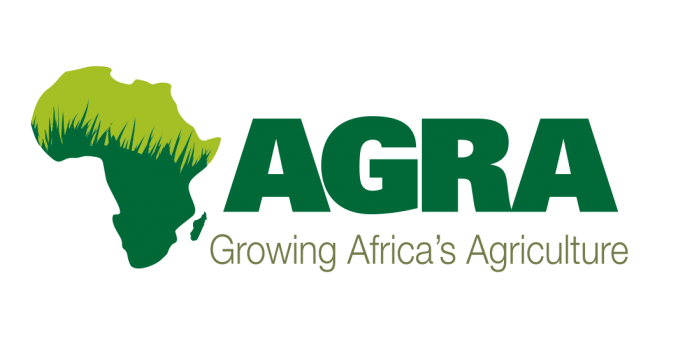
Assan Ngombe, Resilience Officer-AGRA
- To Address Food Insecurity, Kenya Must Reform Food Systems and Land Use
By Assan Ngombe, Resilience Officer at AGRA
Despite the Kenyan economy showing resilience in the face of a recent series of shocks, food insecurity remains a major challenge. In the wake of the COVID-19 pandemic, for instance, the country’s real Gross Domestic Product (GDP) grew 7.5 percent in 2021, compared to a low 0.3 percent a year earlier, when the effects of the pandemic were at their severest. Even then, this level of success has eluded the country at the meal table, with 10 million Kenyans classified by the government as suffering from chronic food insecurity and poor nutrition.
The performance is no better when Kenya is compared to other nations with the country ranked 90th out of 125 countries on the Global Hunger Index of 2023, with its hunger level designated as “serious.” While agriculture remains the dominant sector of the Kenyan economy, accounting for 22.4 percent of the GDP, according to 2021 data from the Kenya National Bureau of Statistics (KNBS), Kenya has been unable to produce enough food to feed its growing population. Food production has been constrained by a number of factors including the low adoption of technologies by farmers, food loss and waste, low private sector investment, drought and other climate-related challenges.
While agriculture remains the dominant sector of the Kenyan economy, accounting for 22.4 percent of the GDP, according to 2021 data from the Kenya National Bureau of Statistics (KNBS), Kenya has been unable to produce enough food to feed its growing population. Food production has been constrained by a number of factors including the low adoption of technologies by farmers, food loss and waste, low private sector investment, drought and other climate-related challenges.
The increasing gap between food production and population growth has resulted in the inevitability of imports, which have been increasing gradually, to fill the deficit. Between the years 2017 to 2021, food imported for household consumption rose 23.2 percent to reach a value of Sh228.4 billion, up from Sh185.4 billion. In a worrying trend, food now constitutes 17 percent of all imports into Kenya, having risen from 10 percent in the last decade, which translates, in real terms, into an increase in value from $1.2 billion to more than double that at $3 billion.
The inescapable corollary to this situation is that Kenya has become highly vulnerable to global food shocks, such as the logistical challenges presented by the COVID-19 pandemic and the Russia-Ukraine war. How can Kenya engender a sustainable food system and future-proof its food security in an uncertain world, going forward?
 A group of experts believes that Kenya must transform its food and land use systems in order to achieve the capacity to feed its people, in an inclusive, equitable and environmentally sustainable manner and ultimately reducing dependence on imports or worse still, aid from other countries.
A group of experts believes that Kenya must transform its food and land use systems in order to achieve the capacity to feed its people, in an inclusive, equitable and environmentally sustainable manner and ultimately reducing dependence on imports or worse still, aid from other countries.
The group brings together 44 member organizations, with its secretariat hosted by AGRA, World Resources Institute (WRI) and GAIN (Global Alliance for Improved Nutrition). Working collaboratively under the banner of the Food and Land Use (FOLU) Coalition, and with the input of the national and county governments, the group of experts, on World Soil Day (December 15, 2023) launched Kenya Food Systems and Land Use Action Plan 2024 – 2030.
A product of several engagements and validation, especially with county governments and regional economic blocs, the plan identifies five key ‘transition’ challenges which must be addressed for Kenya to attain an equitable food security and sustainable land use systems. These transition areas are 1) ensuring healthy diets; 2) promoting productive and regenerative agriculture systems; 3) protecting and restoring nature; 4) curbing food loss and waste and 5) youth and overall social inclusion. The report also addresses cross-cutting issues such as harnessing digital technologies in addressing food and land use issues in the country.
The prescriptions for addressing the challenges faced by Kenya’s food and land use systems are based on the review of the legal, policy, regulatory and institutional frameworks and consultation with stakeholders, including officials of county governments as agriculture and the management of food systems is a devolved function.
With the Ministry of Agriculture and Livestock Development as the proposed lead implementor with the support of other line ministries like Environment and Natural Resources, Health, Water and Irrigation and Lands, the plan identifies priorities that, if executed, could contribute to Kenya achieving sustainable food and land use systems.
For Kenya to transit to sustainable and healthy diets, for instance, the plan seeks the pursuit of a number of strategic objectives. These include the production, consumption, preservation and trade in diversified and nutrition-adequate diets, especially those that are plant-rich; focusing on the implementation of a coherent, conducive legal, regulatory,and institutional framework for seeds, animal breeds, and fish fingerlings production, multiplication,distribution, and access to markets; scaling up programs for the fortification or bio-fortification of widely consumed staple foods such as maize and promoting the utilisation and consumption of ‘forgotten’ indigenous foods.
Still on health diets, the plan prioritizes the review and implementation of micronutrient, healthy diet guidelines and strategies and harmonization of inter-county taxes and other levies to enable easy movement of food within Kenya’s borders.
The completion and launch of Kenya’s food and use action plan is timely as it coincides with the endorsement of a new Declaration on strengthening food systems, building resilience to climate change, reducing global emissions, and contributing to the global fight against hunger, aligned with the UN Sustainable Development Goals (SDGs) at COP28. Kenya is one of over 130 countries, globally that has endorsed the declaration.
The food and land use action plan will therefore serve as one of the key policy and programme instruments, that will contribute towards putting inti action the commitments made in signing the declaration.









